
NGC 6744 is an intermediate spiral galaxy about 30 million light-years away in the constellation Pavo (Peacock). It is considered as a Milky Way mimic in the immediate vicinity, displaying flocculent (fluffy) arms and an elongated core. It also has at least one distorted companion galaxy superficially similar to one of the Magellanic Clouds. It was discovered from Parramatta in Australia by Scottish astronomer James Dunlop on 30 June 1826.

NGC 4394 is a SBb barred spiral galaxy in the constellation Coma Berenices and is situated about 39.5 million light-years from Earth. It was discovered on 14 March 1784 by the German–British astronomer William Herschel. It is a presumed companion to the lenticular galaxy M85 / NGC 4382, which lies 8 arc minutes away. It is also a member of the Virgo Cluster.

NGC 4633 is a spiral galaxy located about 70 million light-years away in the constellation of Coma Berenices. It is interacting with the nearby galaxy NGC 4634. NGC 4633 was discovered by astronomer Edward D. Swift on April 27, 1887. It was rediscovered on November 23, 1900, by astronomer Arnold Schwassmann and was later listed as IC 3688. NGC 4633 is a member of the Virgo Cluster.

NGC 4492 is a spiral galaxy located about 90 million light-years away in the constellation Virgo. NGC 4492 was discovered by astronomer William Herschel on December 28, 1785. It was rediscovered by astronomer Arnold Schwassmann on January 23, 1900, and was listed as IC 3438. NGC 4492 lies in the direction of the Virgo Cluster. However, it is not considered to be a member of that cluster.

NGC 4498 is a barred spiral galaxy located about 50 million light-years away in the constellation Coma Berenices. NGC 4498 was discovered by astronomer William Herschel on March 21, 1784. NGC 4498 is a member of the Virgo Cluster.

NGC 4540 is a spiral galaxy with type 1 Seyfert activity located about 64 million light-years away in the constellation Coma Berenices. NGC 4540 was discovered by astronomer William Herschel on March 21, 1784 and is a member of the Virgo Cluster.

NGC 4222 is an edge-on spiral galaxy located about 60 million light-years away in the constellation Coma Berenices. It was discovered by astronomer William Herschel on April 8, 1784 and is often misidentified as IC 3087. NGC 4222 is a member of the Virgo Cluster and is a companion of NGC 4216 which lies about 180,000 ly (56 kpc) away. Despite this, the two galaxies are not interacting.
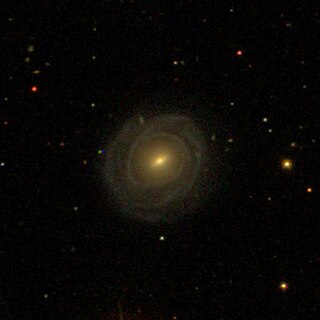
NGC 4326 is a barred spiral galaxy with a ring located about 330 million light-years away in the constellation Virgo. It was discovered by astronomer William Herschel on April 13, 1784, who described it as "vF, S, R, bM, 1st of 3". It is a large galaxy, with a diameter of around 200,000 ly (61 kpc) making it nearly twice the size of the Milky Way. NGC 4326 is also classified as a LINER galaxy. Despite being listed in the Virgo Cluster catalog as VCC 623, it is not a member of the Virgo Cluster but instead a background galaxy.

IC 4271 is a spiral galaxy located some 800 million light-years away in the Canes Venatici constellation. It is 130,000 light-years in diameter. IC 4271 was first located on July 10, 1896, by Stephane Javelle, a French astronomer. It hosts a Seyfert type 2 nucleus, containing an acceleration disc around its supermassive black hole which releases large amounts of radiation, hence its bright appearance. IC 4271 appears to be interacting with its smaller neighboring galaxy, PGC 3096774.
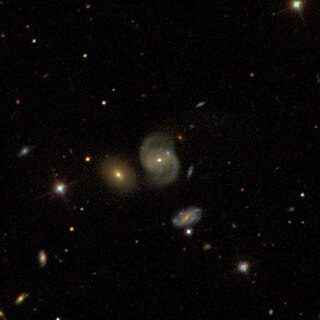
IC 4461 is a spiral galaxy located in the Boötes constellation, located at distance of 417 million light-years from both the Milky Way and Andromeda Galaxy.

IC 3625 is a lenticular galaxy located in the constellation of Virgo, 990 million light-years away from the Solar System. With an apparent size of 0.75 by 0.55 arcmin, IC 3625 has an diameter of 200,000 light years, making it twice the size of the Milky Way. The object was discovered by American astronomer, Royal Harwood Frost on May 10, 1904. Despite listed in the Virgo Cluster catalogue as VCC 1799, it is not a member of the Virgo Cluster but instead a background galaxy.
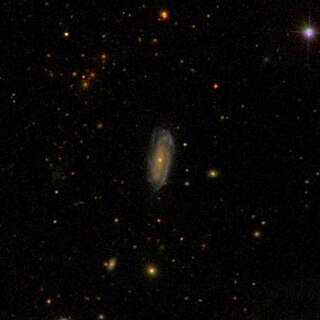
IC 3686 is a Sc type spiral galaxy located 920 million light-years from the solar system in the constellation of Virgo. It was discovered by American astronomer, Royal Harwood Frost on May 10, 1904. Frost described it as magnitude 14.3 and RA 12 42 at 36.0, Dec +11 44 22. IC 3686 has an estimated diameter of 270,000 light-years making it larger compared to the Milky Way. and is classified as LINER-type active galactic nucleus galaxy according to SIMBAD. Despite listed in the Virgo Cluster catalogue as VCC 1927, it is not a member of the Virgo Cluster but a background galaxy.

IC 3528 is a Seyfert 1.5 type spiral galaxy with X-ray emission located 660 million light-years away in the constellation of Coma Berenices. It lies near to spiral galaxy NGC 4540, although the two of them are quite far. The object was discovered by Royal Harwood Frost on May 7, 1904. Although listed as a member in the Virgo Cluster Catalogue as VCC 1593, it is not a member of the Virgo cluster but a background galaxy.
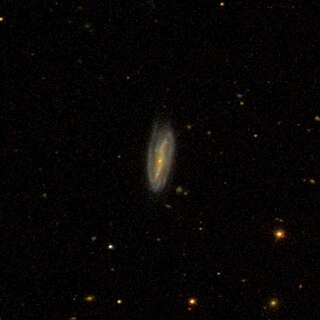
IC 3505 is a barred spiral galaxy located 640 million light-years away from the Solar System in the Coma Berenices constellation. With an apparent size of 0.95 by 0.35 arcmin, IC 3505 has an estimated diameter of 170,000 light-years, making it slightly larger compared to the Milky Way. It is categorized as a LINER galaxy with an active galactic nucleus emitting weak emission-lines.
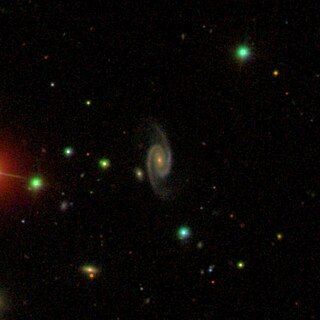
IC 3053 is a type Sab barred spiral galaxy with a ring located in the Coma Berenices constellation. The galaxy lies 720 million light-years from the solar system and has an estimated diameter of 180,000 light-years meaning the galaxy is much larger compared to the Milky Way. IC 3053 was first discovered by Royal Harwood Frost on May 7, 1904. Despite listed in the Virgo Cluster Catalogue as VCC 95, it is not a member of the Virgo Cluster due to its high redshift and instead a background galaxy.
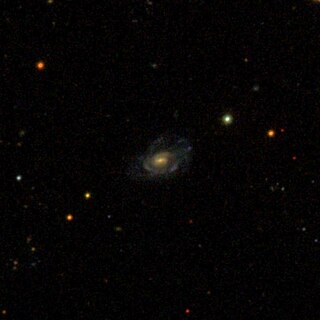
IC 3038 is a type Sab spiral galaxy located in the Virgo constellation. It is located 940 million light-years from the Solar System. The galaxy has an approximate diameter of 220,000 light-years, thus making it larger compared to the Milky Way. IC 3038 was found by Royal Harwood Frost on 7 May 1904. It has an apparent magnitude of 16p and located at right ascension of and declination. Although listed in the Virgo Cluster catalogue as VCC 57, it is not part of the Virgo Cluster, but instead a background galaxy.

IC 3246 known as PGC 40202, is a barred spiral galaxy with a ring located in the Virgo constellation. It is situated 1.13 billion light-years away from the Solar System and was discovered by Friedrich Karl Arnold Schwassmann on September 14, 1900. IC 3246 has a surface brightness of 23.6 magnitude/arc seconds and located at right ascension and declination respectively.

IC 1166 are a pair of galaxies in the Corona Borealis constellation comprising IC 1166 NED01 and IC 1166 NED02. They are located 977 million light-years from the solar system and were discovered on July 28, 1892, by Stephane Javelle.
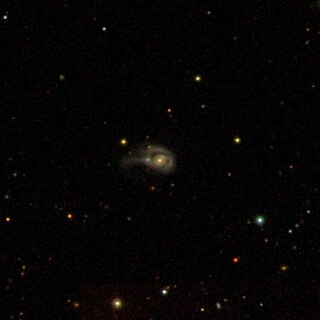
IC 3275 is a spiral galaxy with a ring structure located in the Virgo constellation. It is located 811 million light-years away from the Solar System and has an approximate diameter of 120,000 light-years across. IC 3275 was discovered on May 7, 1904, by Royal Harwood Frost.

IC 3447 is a type Sc barred spiral galaxy located in the constellation Virgo. It has a redshift of 0.092479, which means IC 3447 is 1.27 billion light-years from Earth, making it one of the furthest objects in the Index Catalogue. The galaxy has apparent dimensions of 0.30 x 0.3 arcmin, which means IC 3447 is 111,000 light-years across. It was discovered by Royal Harwood Frost on May 10, 1904.




















